.
What are the most common causes of imbalance in rotating components, and how can they be addressed?
Imbalance in rotating components is a frequent issue in industrial operations and can lead to vibration, noise, and reduced machine efficiency. The most common causes include:
Uneven Weight Distribution: This occurs when the mass is not evenly distributed across the rotor. It can be addressed through precision balancing processes.
Manufacturing Defects: Irregularities during production, such as asymmetrical designs or material inconsistencies, can cause imbalance. These defects can be corrected using dynamic or static balancing techniques.
Wear and Tear: Over time, components may experience wear, resulting in an uneven surface or mass distribution. Regular inspections and maintenance can help identify and resolve these issues.
Assembly Errors: Improper alignment during assembly can lead to imbalance. Proper alignment tools and techniques can correct this.
By identifying and addressing these causes, you can ensure smooth operations and extend the lifespan of your equipment.
Related Topics You Might Find Interesting:
How do I know what ATS balancing machine model (Vertical, horızontal, cradle, driveshaft, static, dynamic) Is the best for my application?
How do we decide the size of the machine?
